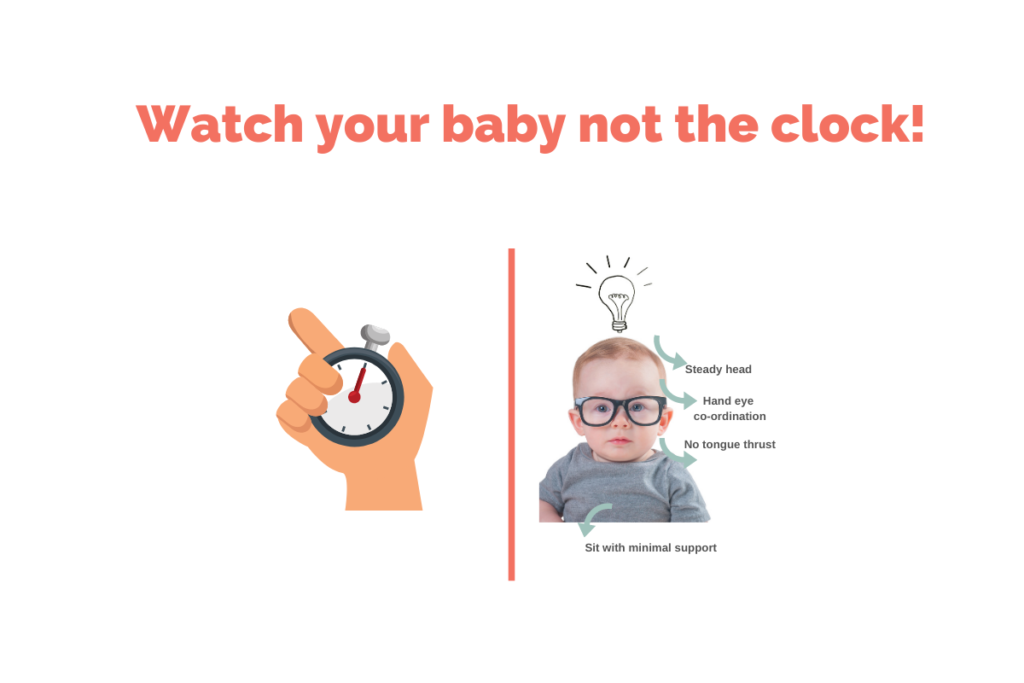Managing reflux in babies can be a minefield. And even well-meaning online groups can do more harm than good. This blog will help you separate fact from fiction!
Not all information about managing reflux in babies is correct.
There are entire Facebook groups, books and websites dedicated to helping parents survive, diagnose and manage reflux in their babies. However, much misinformation abounds, unfortunately.
What is reflux?
Reflux is the medical term for ‘spitting up’! It occurs when the contents of the stomach come back up into the oesophagus or mouth. It’s also called gastro-oesophageal reflux, regurgitation, posseting or silent reflux (when the stomach contents don’t make it up and out of the mouth!).
Most babies with reflux are ‘happy spitters’?
Reflux is a normal process that occurs in healthy babies, children and adults. When this happens to us as adults, we benefit from gravity, so all that tends to escape is gas in the form of a burp! But a baby is lying down much of the time so what escapes tends to be milk.
Most babies have brief episodes during which they spit up milk through their mouth or nose. This does not usually bother them, doesn’t lead to any complications and does not require treatment.
Babies who spit up frequently but who feed well, gain weight typically, and are not unusually irritable are usually considered ‘happy spitters’.
“Reflux” is commonly blamed for irritability; however, excessive crying and reflux are both common conditions in babies; therefore, they often coincide, without necessarily being related.

When does reflux begin?
Reflux usually begins before eight weeks of age. It may be frequent with some babies having six or more episodes every day, typically peaks at four months and resolves in 90% of babies by one-year-old.
Why is reflux so common in babies?
Babies triple their body weight in the first year of life and therefore need lots of calories relative to their small size. This means that their tummy is often full triggering the muscle at the top of the stomach to open, allowing the stomach contents to escape. It’s the equivalent of us adults drinking a couple of litres of milk every 3-4 hours and then laying down in between!
When is reflux a cause for concern? GORD.
While ‘reflux is normal, in a small number of babies, reflux may cause signs of distress or may lead to certain complications that need medical management. This is known as gastro-oesophageal reflux disease (GORD), and these babies are sometimes referred to as a ‘scrawny screamers’! Some of the signs that your baby might have GORD include refusing to feed, frequently crying and arching the neck and back as if in pain, choking while spitting up, forceful or projectile vomiting, spitting up blood, frequent coughing or not gaining weight. Many of these symptoms, however, occur in all babies with or without GORD. If excessive irritability and pain are the only symptoms, it is unlikely to be related to GORD.

Positions that may help and those to avoid
- Placing your baby in upright positions may help keep food in the stomach by gravity. When your baby’s body is slumped, pressure on the tummy can push food out. Careful positioning keeps your baby’s body upright and straight. If you see ‘wrinkles’ on your baby’s stomach, it means that they are not upright.
- Swings and bouncy seats can work well to keep your baby upright. Use rolled blankets or towels to keep their body straight when they are slumping. Car seats cause babies to slump, increasing the stomach’s pressure and making reflux worse.
- Tummy time in an elevated position at 30 degrees is beneficial, but this shouldn’t be used for sleeping due to SIDS risk. Babies must be supervised in this position.
- If your baby shows signs of reflux during nappy changes, prop your baby on a low wedge or pillow. Roll your baby to the side to wipe their bum, rather than lifting both legs into the air. Try to time changes before feeding, when the stomach is most empty.
- Choose a front carrier that keeps your baby upright and straight; a lot of slings tend to ‘bend’ your baby!
- Holding your baby at your shoulder keeps them very upright and the body straight. Your baby can be comfortable on their back in your lap if your knees are bent enough to keep your baby upright.
Feeding strategies that can help
Breastfeeding your baby with reflux
Make sure your baby is at an angle and not flat. Laid-back breastfeeding positions can help with this. Speak with a certified lactation consultant to check that your baby is latched on well and advise on managing high milk supply, a forceful letdown and tongue tie as these can also impact reflux.
Bottle feeding your baby with reflux
- Be sure to hold your baby in a position with the body upright and straight and try paced bottle feeding to avoid ‘guzzling’ of feeds. Use an anti-colic teat and make sure the hole is not too large and avoid shaking the feed when you’re making it up as this traps air that is then swallowed.
- Small, frequent feedings may help reduce reflux. Follow your baby’s hunger signals but try to space feedings 2 to 3 hours apart. Your baby will take less and not overfill their stomach.
- Thickening feeds or using pre-thickened formula may improve slightly visible regurgitation and vomiting in babies. But it is uncertain whether the use of food thickeners improves other signs and symptoms of reflux. Talk to a registered dietitian about thickening feeds or using specialised formula.
Strategies for breastfed and bottle-fed babies with reflux.
- When you burp your baby sitting on your lap, be sure the body is straight upright, not leaning forward or slumping.
- Keeping your baby upright and still for 15 to 30 minutes after feeding may help. When your baby’s stomach is full, sudden movements and position changes may cause reflux.
What’s the link between reflux and cows’ milk protein allergy?
It is reported that up to 40% of babies with gastro-oesophageal reflux disease (not normal reflux) have a delayed cows milk protein allergy. A registered paediatric dietitian should appropriately diagnose this before cutting out cows milk food in your own diet if you are breastfeeding or switching to a specialised formula if you are bottle feeding.
If your baby is cows milk allergic or you think they might be I can help with a virtual consultation.
Are medications helpful for babies with reflux?
You will need to speak with your GP or paediatrician to discuss whether medications are necessary for your baby. Medicines called alginates (Gaviscon) can be used in the short term if the positioning and feeding tips above haven’t been helpful. Acid-suppressing medications are only recommended for babies with an inflamed oesophagus caused by GORD and not for treating crying and distress or for the treatment of visible regurgitation in otherwise healthy babies.
How do I wean my baby with reflux?

The short answer is the same way that you wean a baby without reflux! While plenty of myths about weaning and reflux circulate, there is very little evidence to support these theories. But a lot of money to be made from writing a book claiming the miracle cure!
Myth One-Babies with reflux should be weaned earlier.
Parents of babies with reflux are often advised to wean early before the six-month mark, and often way before this. But there’s no evidence to suggest that this is beneficial, and many parents tell me it usually makes a challenging feeding situation even more difficult. Wean your baby when they are developmentally ready.
READ MORE >>>When is my baby ready for solids

Myth Two-You should introduce foods slowly and using special ‘traffic light’ systems.
There is no rationale for these ‘traffic light’ food systems. Adults with reflux are often advised to avoid foods such as coffee, caffeine, chocolate, spicy foods, citrus, carbonated beverages, fatty foods, or mint, but no studies have shown clinical improvement in reflux symptoms when avoiding these foods. In any case, most parents are not offering their baby spicy curries and expresso! If you give your baby orange and feel their symptoms are worse, you can hold off on giving it for a while and try again later.
Logically, overfeeding your baby will worsen reflux symptoms, and in any case, this is not desirable for any baby. So, aim to be responsive to your baby’s fullness cues and end the meal/milk feed when they’ve had enough.
READ MORE >>> Portion sizes during weaning
Get more weaning advice you can trust by enrolling in Ready, Steady, Wean-this online course will take you from confused to confident in no time at all.







0 Comments